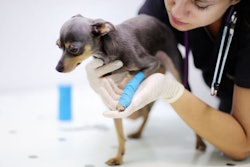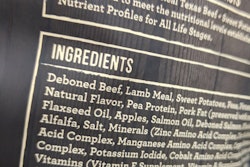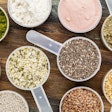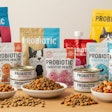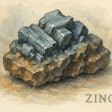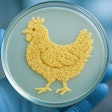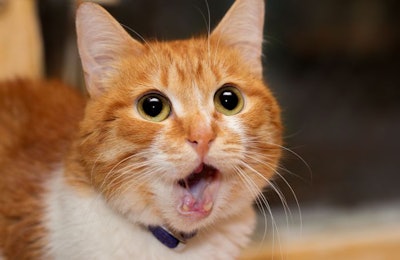
Animal nutrition scientists suggest that commercial cat food formulators reassess the amounts and types of phosphorus-containing ingredients they use in their products. Those researchers found evidence that when phosphate concentrations in cat food exceed the required daily dose, it may damage healthy cats’ kidneys.
“GRAS [generally recognized as safe] may not be always as safe as we think,” Ellen Kienzle, PhD, veterinary science professor at Ludwig-Maximillian University in Munich, Germany, told Petfood Industry. “We do not yet know the whole story, but we do know that phosphorus excess can be nephrotoxic [harmful to the kidneys]. Sources of phosphorus and the calcium to phosphorus ratio appear to be important.”
Kienzle, along with Britta Dobenecker, DVM, led the research on phosphorus’ effects on cat kidney health. The Journal of Feline Medicine and Surgery published their study.
Kienzle noted that some cat foods analyzed by a German consumer-products testing organization, Stiftung Warentest, contained five times or more the amount of phosphorus needed to maintain health. In particular, moist food formulations contained on average several times the amount of phosphorus required to keep cats healthy. Although previously regarded as harmless, Kienzle’s team found that the maximum level detected in these tests (nearly nine times the required amount) might be sufficient to damage healthy feline kidneys within a few weeks.
Cat kidney health and phosphorus research
Approximately 35 percent of older cats suffer from chronic kidney disease, but the reason was not known, she said. Earlier research found evidence that high phosphorus concentrations in cat food could make kidney disease worse in cats that were already ill. Now, her team has evidence that unnecessary, excessive phosphorus levels in cat food may harm the kidneys of healthy, younger cats, potentially leading to later kidney disease.
In the experiment, scientists fed thirteen healthy adult cats with a diet containing excess phosphorus at approximately five times the felines’ maintenance requirements. Another group of cats ate a diet with only the required level of phosphorus. Both groups ate these diets for 29 days. Researchers collected feces and urine for 10 days of the trial.
Compared to the other group, cats that ate the high phosphorus diet showed signs of glucosuria and albuminuria, which indicated kidney damage. Also, creatinine clearance, a measure of the overall kidney performance, dropped markedly within 28 days in cats eating a diet rich in phosphorus.
Solutions for cat food formulators
The phosphates in animal foods derive in part from natural sources, mainly bone and cereals. However, pet food manufacturers also add inorganic phosphates to achieve the appropriate texture and extend shelf life. Those synthetic forms of phosphorus may be the culprits in cat kidney disease.
“The natural, organic phosphorus content in ingredients for cat food exceeds the requirements, therefore there is no need for further supplementation,” said Kienzle.
“All the phosphorus salts we used were pure chemical grade,” she said. “Calcium monophosphate is not water soluble. It is less dangerous than sodium or potassium monophosphate.”
However in Dobenecker’s recent paper, calcium monophosphate was the main phosphorus source, and it proved to reduce renal function within four weeks, she said. Therefore, cat food formulators should reduce inorganic phosphorus sources.
Ongoing research by Kienzle’s team is looking at how phosphorus source influences kidney health in cats and dogs.
“Phosphorus from bone meal originated from ground bones without any additives,” said Kienzle. “There was no problem detected in cats eating high phosphorus from bone meal for four weeks. The speed of the absorption appears to be important. So far, we think that organic phosphorus is absorbed rather slowly. Water insoluble inorganic phosphorus is absorbed faster than organic phosphorus, but slower than water insoluble inorganic phosphorus.”
While scientists continue to research how phosphorus sources affect cats and dogs kidney health, pet food formulators may wish to reconsider the type and quantities of phosphorus-containing ingredients used in cat and dog food.



